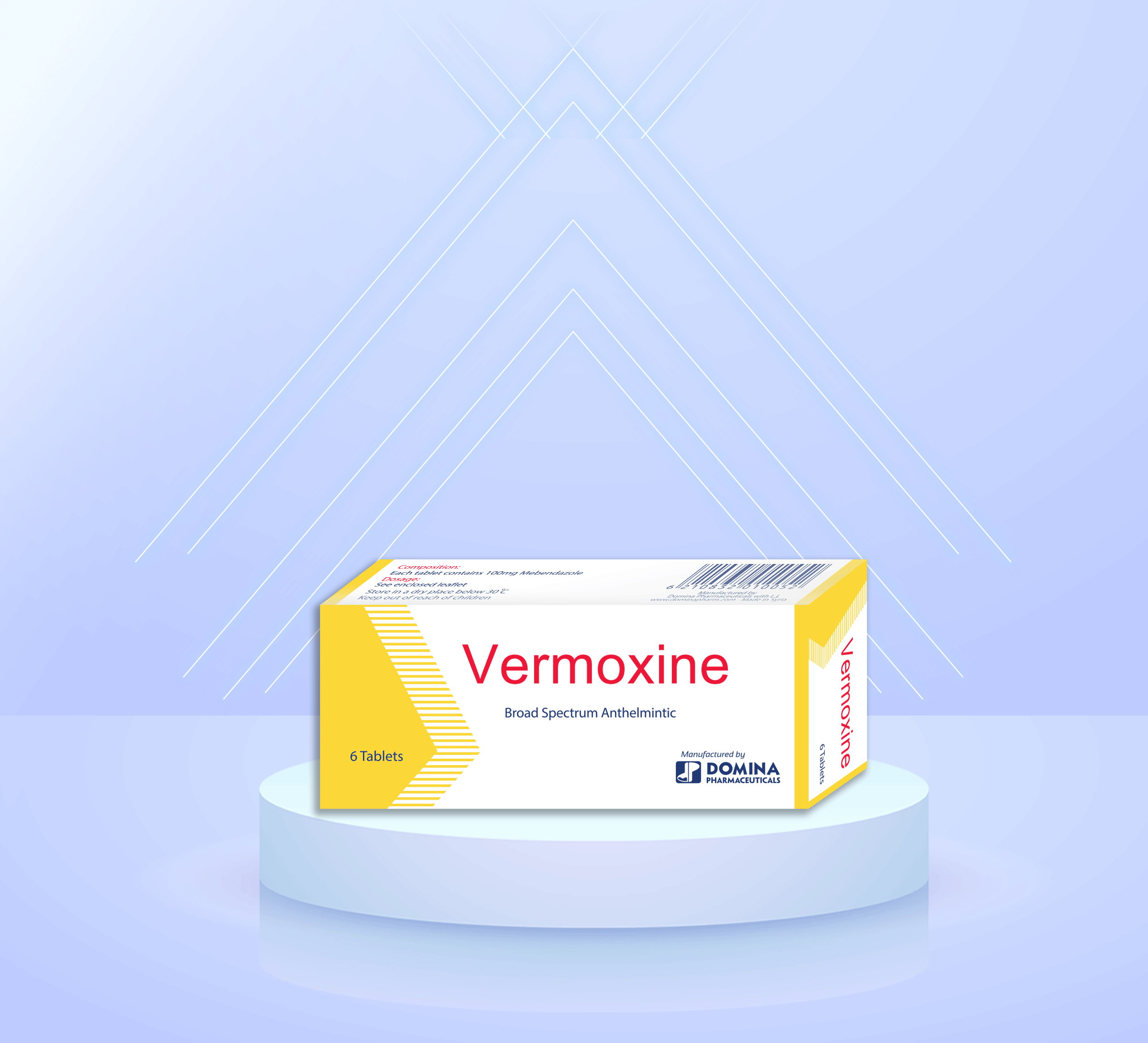
Composition:
Each tablet contains 100mg Mebendazole.
Mechanism Of Action:
Vermoxine is a broad-spectrum anthelmintic, which is very effective and well tolerated. Vermoxine affects by irreversible inhibition of glucose absorption, which leads to reduce the storage of ATP and glucogen. Thus causes the death of worms.
Indications:
Vermoxine is indicated for treatment of: Intestinal nematode infections, ascariasis, enterobiasis, necatoriasis, trichuriasis, cestodes and it is useful in mixed infections. Vermoxine is effective against ova and larvae and is also used at high dosages for treatment of hydatid disease.
Dosage And Administration:
There is no need during the treatment for dietary changes or use of laxatives, except in case of constipation.
Adults and children (over 2 years):
Enterobiasis: 5ml (tablespoon) once daily, It is highly recommended that a second dose is taken after 2 weeks, if reinfection is suspected.
Ascariasis, trichuriasis, ancylostomiasis, necatoriasis and mixed infections: 5ml (tablespoon) twice daily for three days
Children under 2 years: Not recommended in the treatment of children under 2 years.
Contraindications:
hypersensitivity to mebendazole.
Side Effects:
Because of poor absorption of Vermoxine from gastrointestinal, side effects are minor. They are such as transient abdominal pain and diarrhea. In very rare cases, the high dosage for treatment of hydatid can produce allergy, liver function disturbances or leucopenia and alopecia.
Use In Pregnancy And Lactation:
Pregnancy:
Treatment with mebendazole during pregnancy is not associated with a significant increase in major congenital defects, but the results indicate that it should be avoided during the first trimester.
Lactation:
Mebendazole use during lactation is considered to be safe due to a low oral absorption and unlikely excretion in milk.
Absorption And Elimination:
Vermoxine is absorbed in a very small quantity by gastrointestinal tract and is metabolized by the liver and excreted by the bile in a metabolized or unmetabolized form. Only 2% of the dosage are excreted by urine. The rest is excreted by feces. Vermoxine highly binds with plasma proteins.